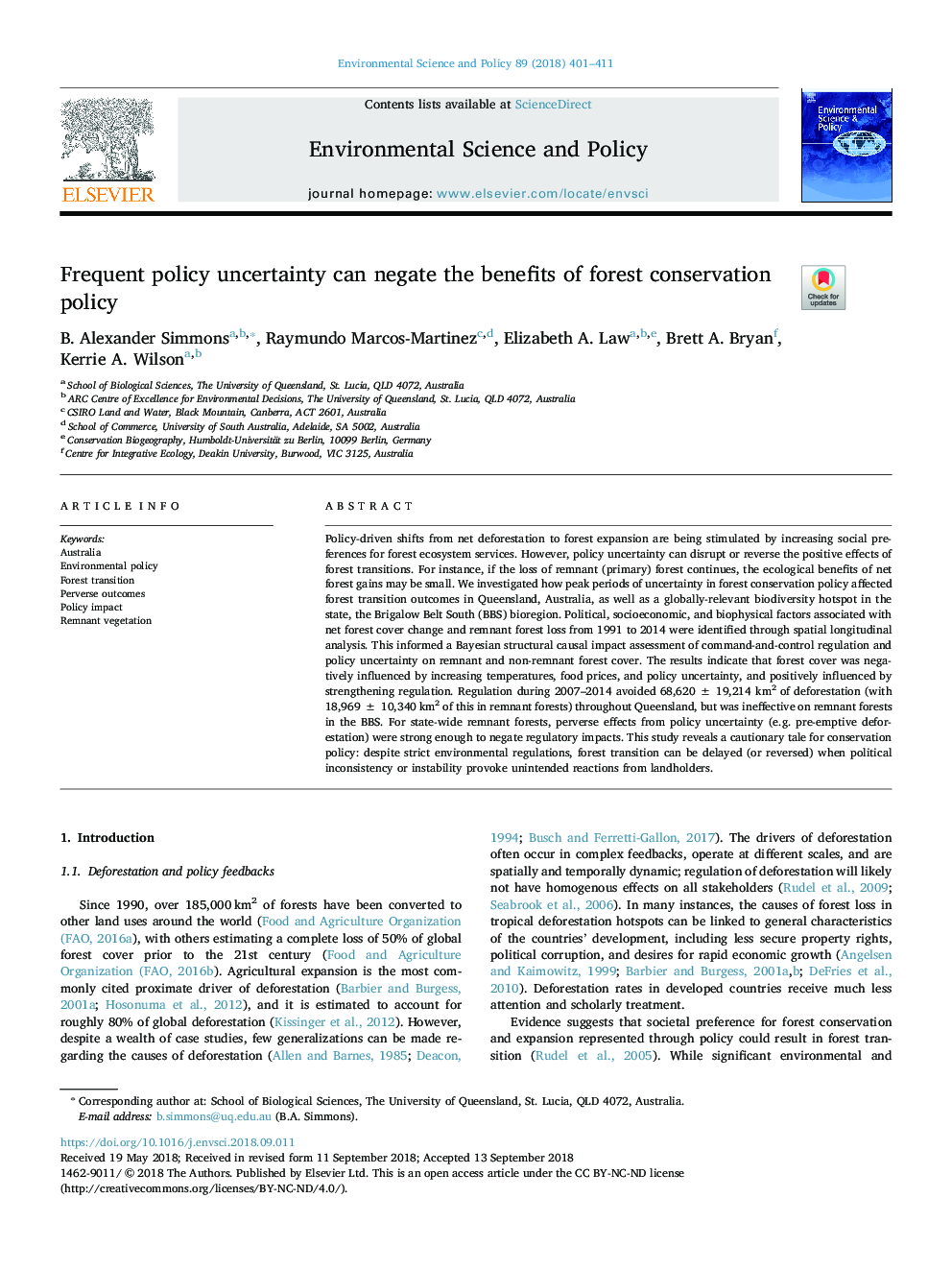| Article ID | Journal | Published Year | Pages | File Type |
|---|---|---|---|---|
| 11005285 | Environmental Science & Policy | 2018 | 11 Pages |
Abstract
Policy-driven shifts from net deforestation to forest expansion are being stimulated by increasing social preferences for forest ecosystem services. However, policy uncertainty can disrupt or reverse the positive effects of forest transitions. For instance, if the loss of remnant (primary) forest continues, the ecological benefits of net forest gains may be small. We investigated how peak periods of uncertainty in forest conservation policy affected forest transition outcomes in Queensland, Australia, as well as a globally-relevant biodiversity hotspot in the state, the Brigalow Belt South (BBS) bioregion. Political, socioeconomic, and biophysical factors associated with net forest cover change and remnant forest loss from 1991 to 2014 were identified through spatial longitudinal analysis. This informed a Bayesian structural causal impact assessment of command-and-control regulation and policy uncertainty on remnant and non-remnant forest cover. The results indicate that forest cover was negatively influenced by increasing temperatures, food prices, and policy uncertainty, and positively influenced by strengthening regulation. Regulation during 2007-2014 avoided 68,620â±â19,214 km2 of deforestation (with 18,969â±â10,340 km2 of this in remnant forests) throughout Queensland, but was ineffective on remnant forests in the BBS. For state-wide remnant forests, perverse effects from policy uncertainty (e.g. pre-emptive deforestation) were strong enough to negate regulatory impacts. This study reveals a cautionary tale for conservation policy: despite strict environmental regulations, forest transition can be delayed (or reversed) when political inconsistency or instability provoke unintended reactions from landholders.
Related Topics
Physical Sciences and Engineering
Energy
Renewable Energy, Sustainability and the Environment
Authors
B. Alexander Simmons, Raymundo Marcos-Martinez, Elizabeth A. Law, Brett A. Bryan, Kerrie A. Wilson,
